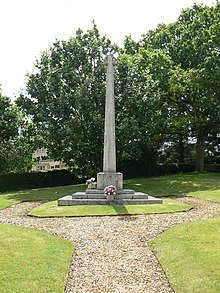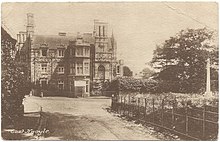
Chippenham is a market town in north-west Wiltshire, England. It lies 13 miles (21 km) north-east of Bath, 86 miles (138 km) west of London and is near the Cotswolds Area of Outstanding Natural Beauty. The town was established on a crossing of the River Avon, where some form of settlement is believed to have existed since before Roman times. It was a royal vill and probably a royal hunting lodge, under Alfred the Great. The town continued to grow when the Great Western Railway arrived in 1841. It had a population of 36,548 in 2021.

Bath City Football Club is a semi-professional football club based in Bath, Somerset, England. The club is affiliated to the Somerset FA and currently competes in the National League South, the sixth tier of English football. Nicknamed the "Romans", the club was founded in 1889 as Bath AFC, and changed its name to Bath City in 1905. The team have played their home matches at Twerton Park since 1932.

Sidney Herbert, 14th Earl of Pembroke, 11th Earl of Montgomery,, styled The Honourable Sidney Herbert between 1861 and 1895, was a British politician and peer.
This is a list of people who have served as Lord Lieutenant of the English county of Wiltshire. From 1750, all Lord Lieutenants have also been Custos Rotulorum of Wiltshire.

Wyndham is the northernmost town in the Kimberley region of Western Australia, 3,315 kilometres (2,060 mi) northeast of Perth via the Great Northern Highway. It was established in 1886 to service a new goldfield at Halls Creek, and it is now a port and service centre for the east Kimberley with a population of 941 as of the 2021 census. Aboriginal and Torres Strait Islander people make up 54% of the population. Wyndham comprises two areas - the original town site at Wyndham Port situated on Cambridge Gulf, and 5 kilometres (3.1 mi) by road to the south, the Three Mile area with the residential and shopping area for the port, also founded in 1886. Wyndham is part of the Shire of Wyndham-East Kimberley.

Clouds House, also known simply as Clouds, is a Grade II* listed building at East Knoyle in Wiltshire, England. Designed by Arts and Crafts architect Philip Webb for Percy Wyndham and his wife Madeline, it was first completed in 1886, but an 1889 fire necessitated its rebuilding, finished in 1891. Clouds was Webb's grandest design. It became a centre of social activity for the intellectual group known as The Souls, and was frequented by artists such as Edward Burne-Jones and politicians like Arthur Balfour.

This is a list of the sheriffs and high sheriffs of Wiltshire.
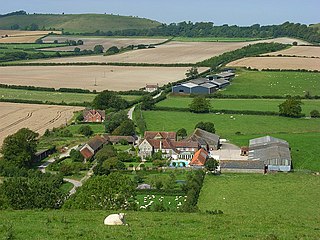
Maiden Bradley is a village in south-west Wiltshire, England, about 6 miles (10 km) south-west of Warminster and bordering the county of Somerset. The B3092 road between Frome and Mere forms the village street. Bradley House, the seat of the Duke of Somerset, is adjacent to the village.
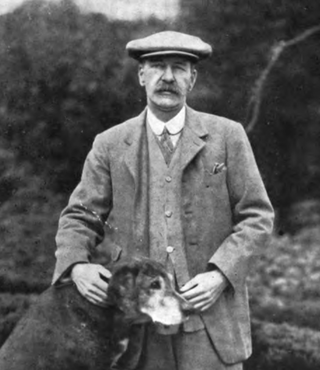
Colonel Sir Alfred "Toby" Rawlinson, 3rd Baronet, was an English soldier and intelligence officer, sportsman, pioneer motorist and aviator.

Lord Alexander George Boteville Thynne was a British Army officer and Conservative politician.

East Knoyle is a village and civil parish in Wiltshire, in the south-west of England, just west of the A350 and about 9 miles (14 km) south of Warminster and 5 miles (8 km) north of Shaftesbury, Dorset. It was the birthplace of the architect Sir Christopher Wren. The parish includes the hamlets of Holloway, Milton, The Green, Underhill and Upton.
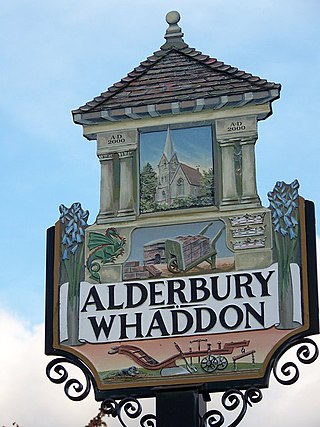
Alderbury is a village and civil parish in Wiltshire, England, in the south of the county around 3 miles (5 km) southeast of Salisbury.
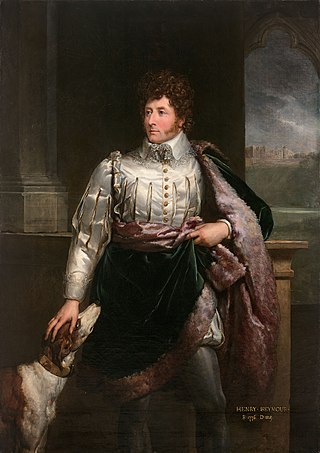
Henry SeymourMP, JP, of Knoyle House, East Knoyle, Wiltshire, of Trent, and of Northbrook, was a British Tory politician.

Pertwood is an ancient settlement and former civil parish, near Warminster in the county of Wiltshire in the west of England. Its land and houses now lie in the parishes of Brixton Deverill, East Knoyle, Sutton Veny and Chicklade, and have fewer than twenty inhabitants.

West Knoyle is a small village and civil parish in southwest Wiltshire, England, close to the southern edge of Salisbury Plain. The village is about 2.5 miles (4 km) east of Mere and 8 miles (13 km) south of Warminster. The A303 trunk road passes about 0.75 miles (1,210 m) north of the village.

Herbert James Maryon was an English sculptor, conservator, goldsmith, archaeologist and authority on ancient metalwork. Maryon practiced and taught sculpture until retiring in 1939, then worked as a conservator with the British Museum from 1944 to 1961. He is best known for his work on the Sutton Hoo ship-burial, which led to his appointment as an Officer of the Order of the British Empire.

The University of Reading War Memorial is a clock tower, designed by Herbert Maryon and situated on the London Road Campus of the University of Reading. Initially designed as a First World War memorial and dedicated in June 1924, it was later expanded in scope to also serve as a memorial of later wars.
The works of Herbert Maryon (1874–1965) were made in a variety of mediums. They were intended to be decorative, functional, or commemorative, and were primarily made during the first four decades of the twentieth century, a span that marked the first half of Maryon's career. In addition to being a sculptor and a goldsmith, Maryon was also an archaeologist, conservator, author, and authority on ancient metalwork—he saw his career as an artist carry him through the Second World War; a second career as a conservator at the British Museum brought him note for his work on the finds from the Sutton Hoo ship-burial.
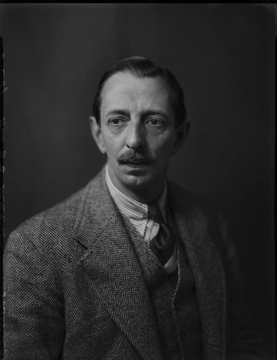
Colonel the Hon. Sir George Sidney Herbert, 1st Baronet was an English businessman and member of the Royal Household.
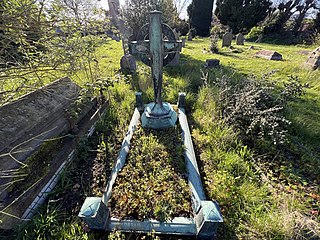
The Duffield Memorial is a gravesite monument located in the churchyard of the Church of St Mary in Great Baddow, Essex, England. Designed by Herbert Maryon and installed in 1912, it originally commemorated Marianne Duffield and William Ward Duffield, who died in 1910 and 1912, respectively. A second plaque was added to commemorate their son, William Bartleet Duffield, who died in 1918. In 2022, Historic England designated the work a Grade II listed building, noting it as an unusual example of both Art Nouveau metalwork and churchyard memorial.
